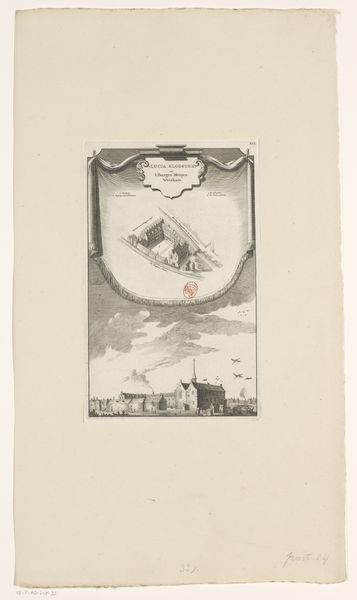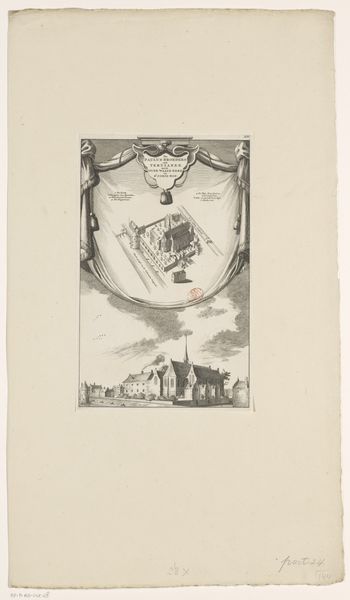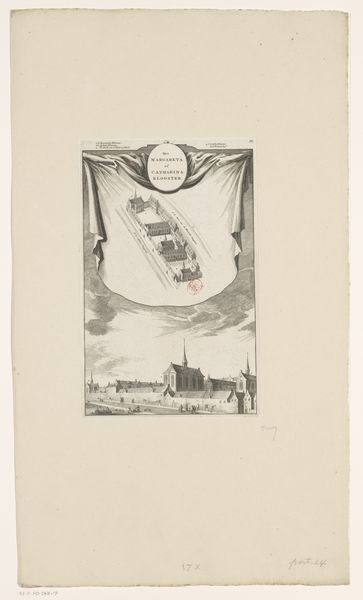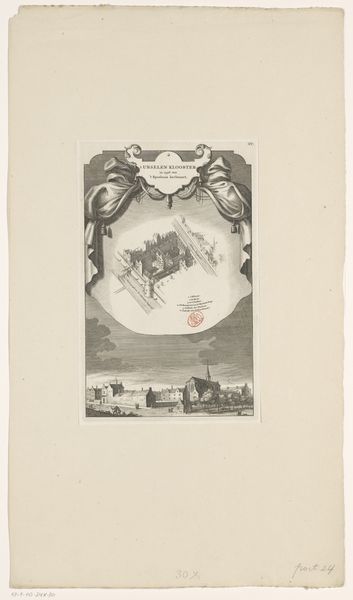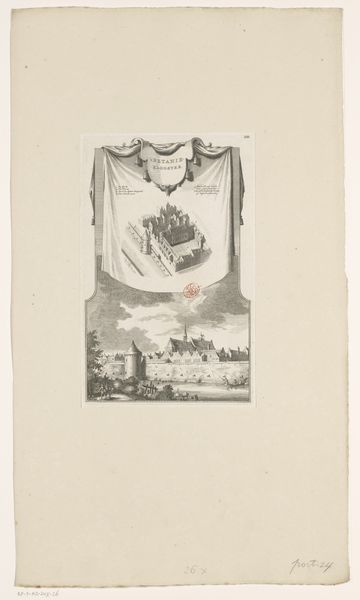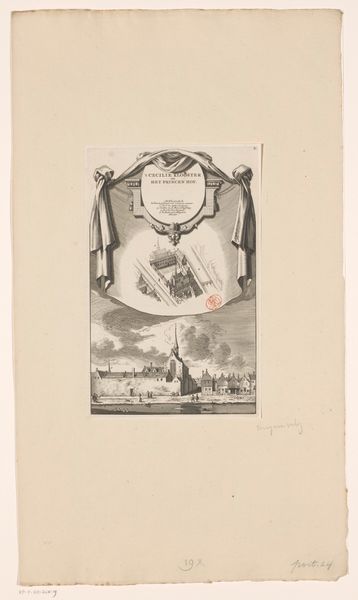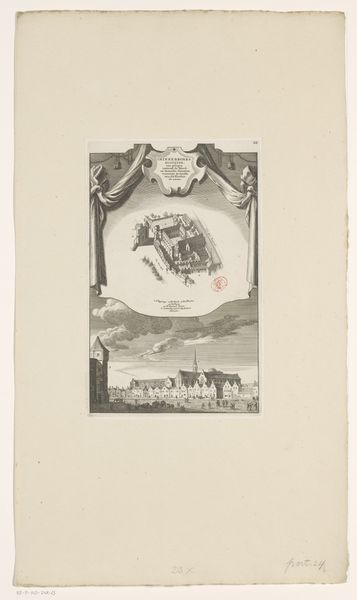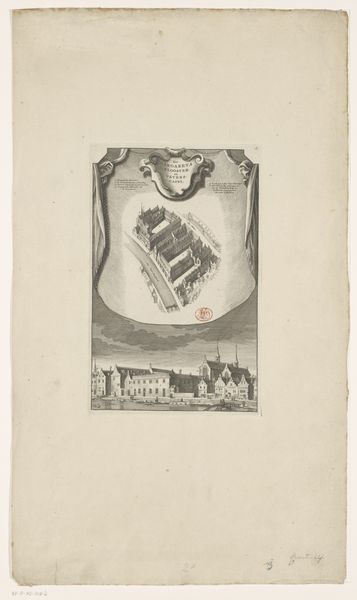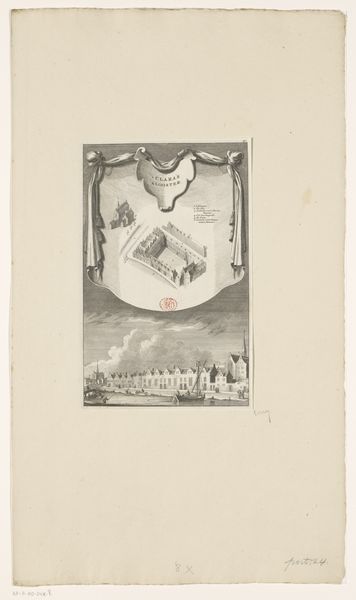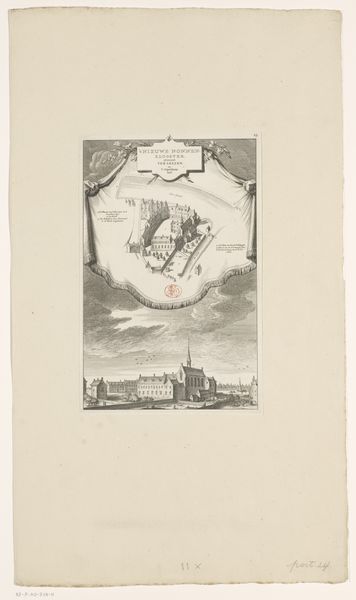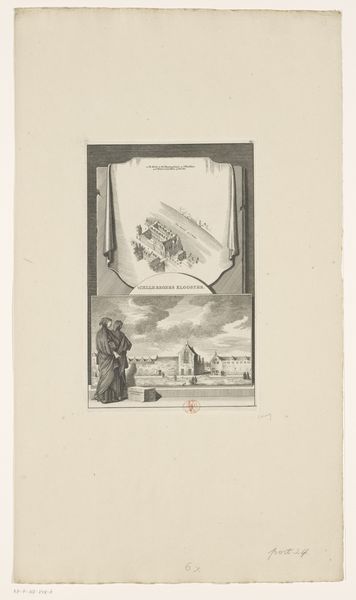
print, engraving
#
baroque
# print
#
landscape
#
cityscape
#
engraving
Dimensions: height 269 mm, width 168 mm
Copyright: Rijks Museum: Open Domain
Editor: This print, “Het Sint-Geertruidenklooster te Amsterdam, ca. 1544,” comes to us from an anonymous artist around 1760. The medium is engraving. It has a somewhat surreal feeling, almost like a dream, with the building floating in a cloud above a cityscape. How do you interpret this work? Curator: The artist's construction of pictorial space is compelling. Notice how the engraving is divided into distinct registers. The upper portion, framed by drapery, presents a geometrically precise, almost diagrammatic, rendering of the monastery. In contrast, the lower register offers a more conventionally representational cityscape. Editor: Yes, that sharp contrast is so striking! What do you think the juxtaposition achieves? Curator: The division emphasizes a formal contrast between idealized vision and observable reality. The aerial perspective of the monastery suggests a detached, objective viewpoint, perhaps reflecting Enlightenment ideals of rational observation and categorization. While the city below offers the details and experience of earthly things. The interplay between geometric precision and the more atmospheric rendition below creates a fascinating visual tension. Does this tension give you any insight? Editor: Perhaps it’s showing two perspectives at once? An overview, but also, an intimacy of actually walking through Amsterdam at that time? Thank you for this perspective, it helps to unpack this complicated engraving. Curator: Indeed. By attending to the formal arrangement of the print, we gain insight into its conceptual complexity. It makes me consider ways of seeing itself.
Comments
No comments
Be the first to comment and join the conversation on the ultimate creative platform.
